Nodes
You can see the list of nodes available in your cluster. Typically you have several nodes in a cluster; in a learning or resource-limited environment, you might have only one node.
The components on a typical node include the kubelet, a container runtime, and the kube-proxy.
If you have multiple nodes, you can search a node by name or label in the search bar. The search result will display the following information about the node. To display a parameter of a node, use Columns on the right side, select the parameter to display from the drop-down list, and click Apply.

| Fields | Description |
|---|---|
| Node | Alphanumeric name of the node |
| Status | Status of a node. It can be either Ready or Not Ready. |
| Roles | Shows the roles of a node, e.g., agent |
| Errors | Shows the number of errors in nodes (if any) |
| K8s Version | Shows the version of Kubernetes cluster |
| Node Group | Shows which collection of worker nodes it belongs to |
| No. of Pods | Shows the total number of pods present in the node |
Clicking on a node shows you a number of details such as:
- CPU Usage and Memory Usage of Node
- CPU Usage and Memory Usage of Each Pod
- Number of Pods in the Node
- List of Pods
- Age of Pods
- Labels, Annotations, and Taints
- Node IP
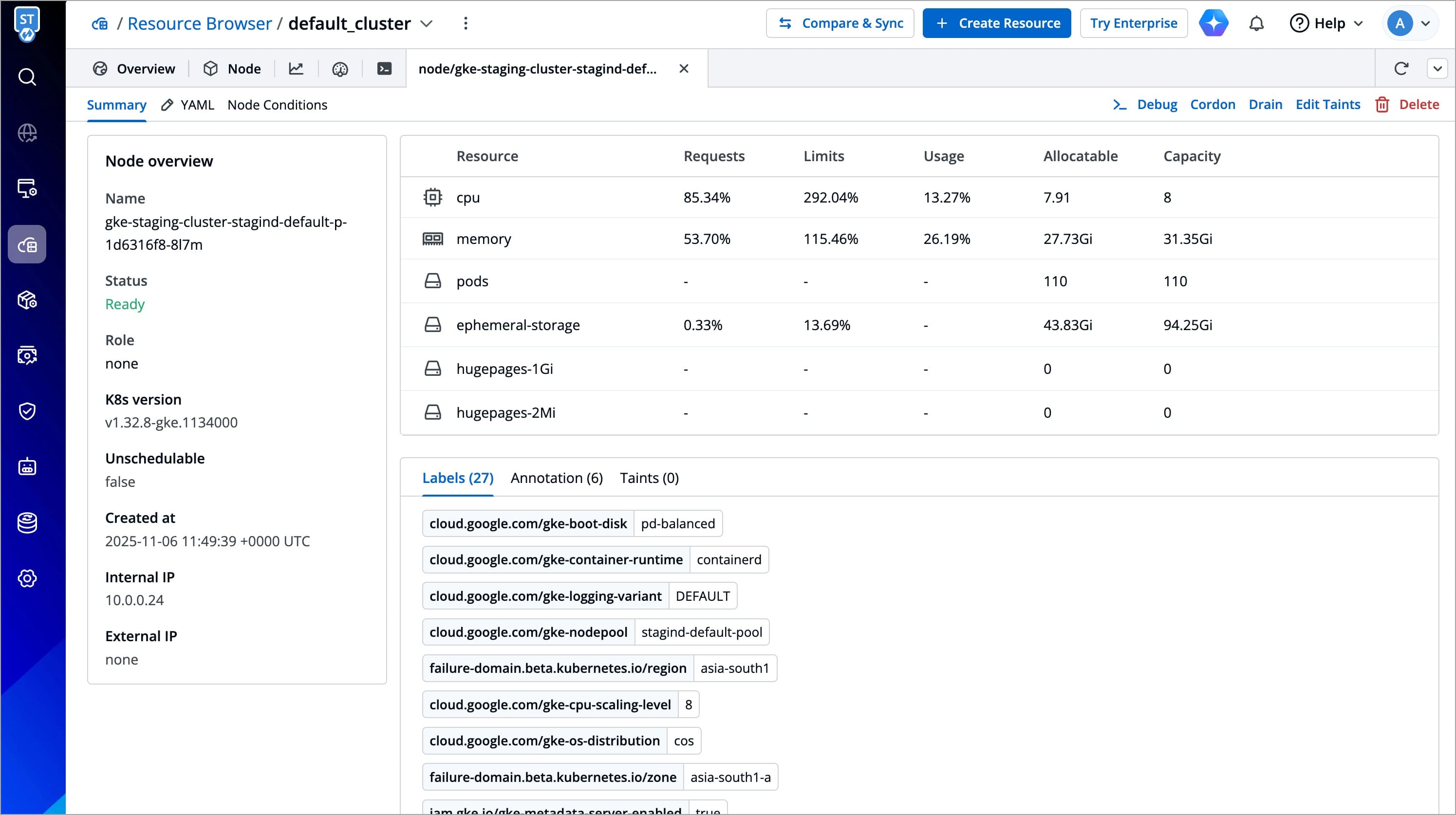
Further using the Devtron UI, you will be able to:
Your applications run on pods, and pods run on nodes. But sometimes, Kubernetes scheduler cannot deploy a pod on a node for several reasons, e.g., node is not ready, node is not reachable, network is unavailable, etc. In such cases, node operations help you manage the nodes better.
Users need to have super-admin permission to perform node operations.
Debug a Node
You can debug a node via Cluster Terminal by selecting your namespace and image from the list that has all CLI utilities like kubectl, helm, netshoot etc. or can use a custom image, which is publicly available.
-
Click Debug.

Figure 3a: Debugging a Node -
Debug a node by selecting the terminal shell, i.e.,
bashorsh.
Figure 3b: Debug Terminal
Cordon a Node
Cordoning a node means making the node unschedulable. After cordoning a node, new pods cannot be scheduled on this node.

-
Click Cordon.

Figure 4b: Cordoning a Node -
A confirmation dialog box will appear, click Cordon Node to proceed.

Figure 4c: Cordon Confirmation
The status of the node shows SchedulingDisabled with Unschedulable parameter set as true.
Similarly, you can uncordon a node by clicking Uncordon. After a node is uncordoned, new pods can be scheduled on the node.
Drain a Node
Before performing maintenance on a node, draining a node evicts all of your pods safely from a node. Safe evictions allow the pod’s containers to gracefully terminate and honour the PodDisruptionBudgets you have specified (if relevant).
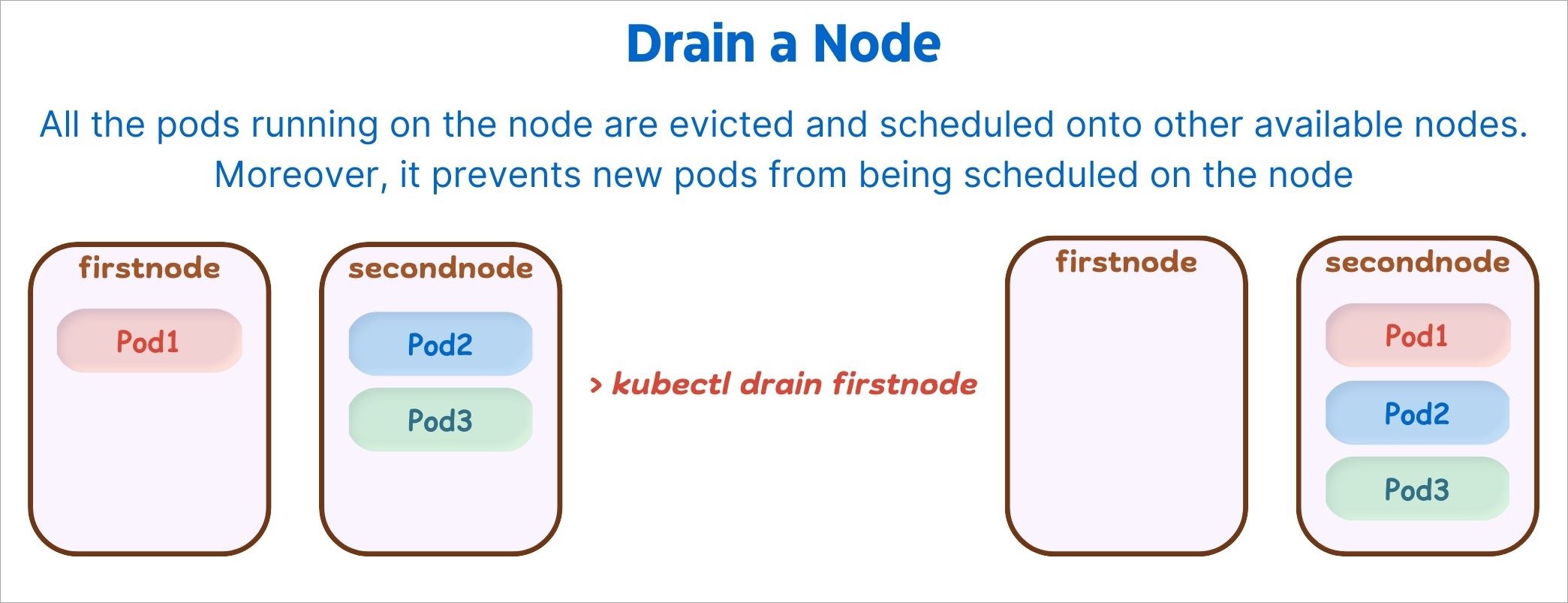
After the node is drained, all pods (including those managed by DaemonSets) in the node will be automatically drained to other nodes in the cluster, and the drained node will be set to cordoned status.
-
Click Drain.

Figure 5b: Draining a Node -
A confirmation dialog box will appear, click Drain Node to proceed.
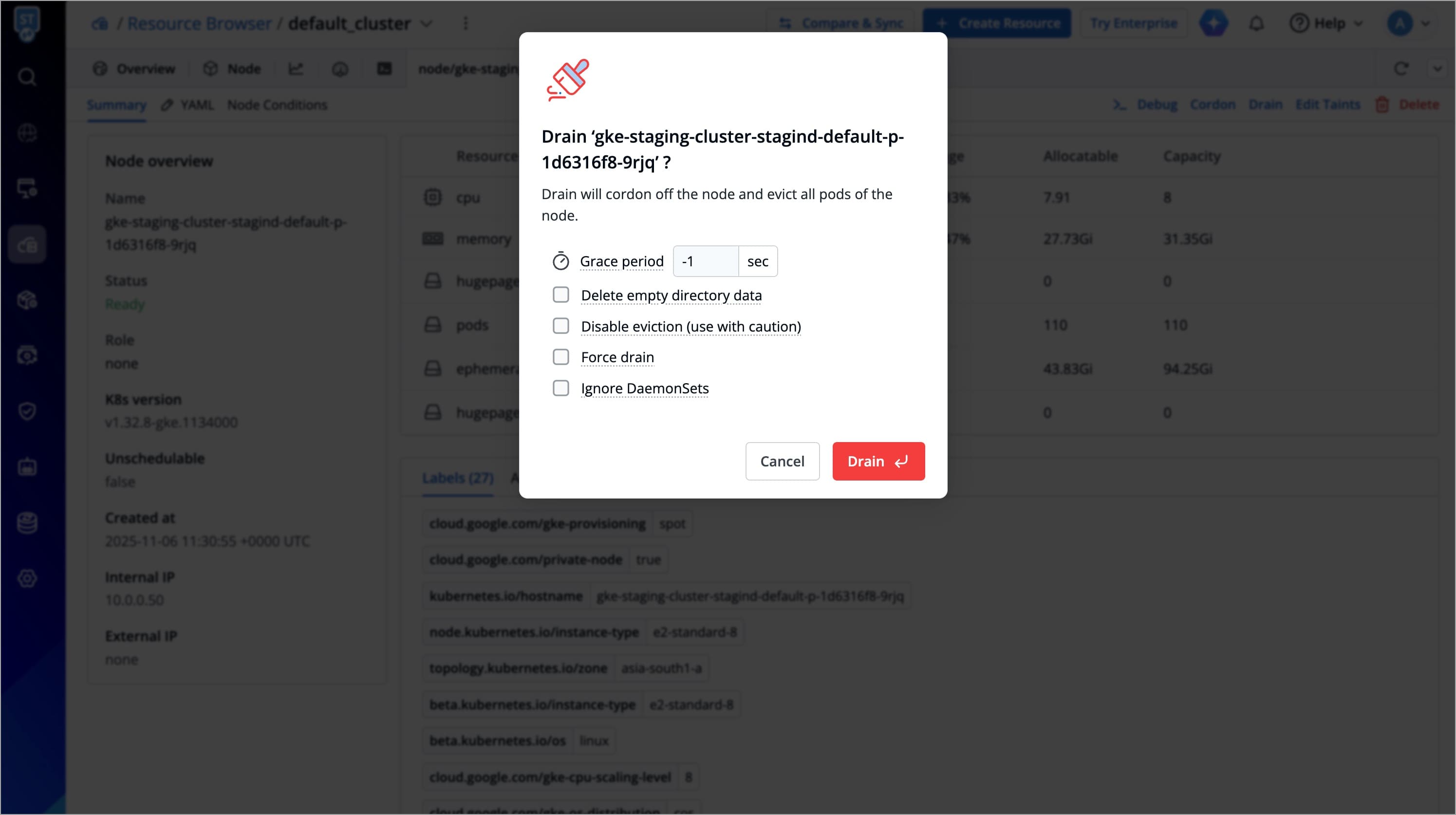
Figure 5c: Drain Confirmation
You can also select from the following conditions before draining a node:
| Name | Usage |
|---|---|
| Grace Period | Period of time in seconds given to each pod to terminate gracefully. If negative, the default value specified in the pod will be used. |
| Delete empty directory data | Enabling this field will delete the pods using empty directory data when the node is drained. |
| Disable eviction (use with caution) | Enabling this field will force drain to use delete, even if eviction is supported. This will bypass checking PodDisruptionBudgets.Note: Make sure to use with caution. |
| Force drain | Enabling this field will force drain a node even if there are pods that do not declare a controller. |
| Ignore DaemonSets | Enabling this field will ignore DaemonSet-managed pods. |
Taint a Node
Taints are key:value pairs associated with effect. After you add taints to nodes, you can set tolerations on a pod to allow the pod to be scheduled to nodes with certain taints. When you taint a node, it will repel all the pods except those that have a toleration for that taint. A node can have one or many taints associated with it.
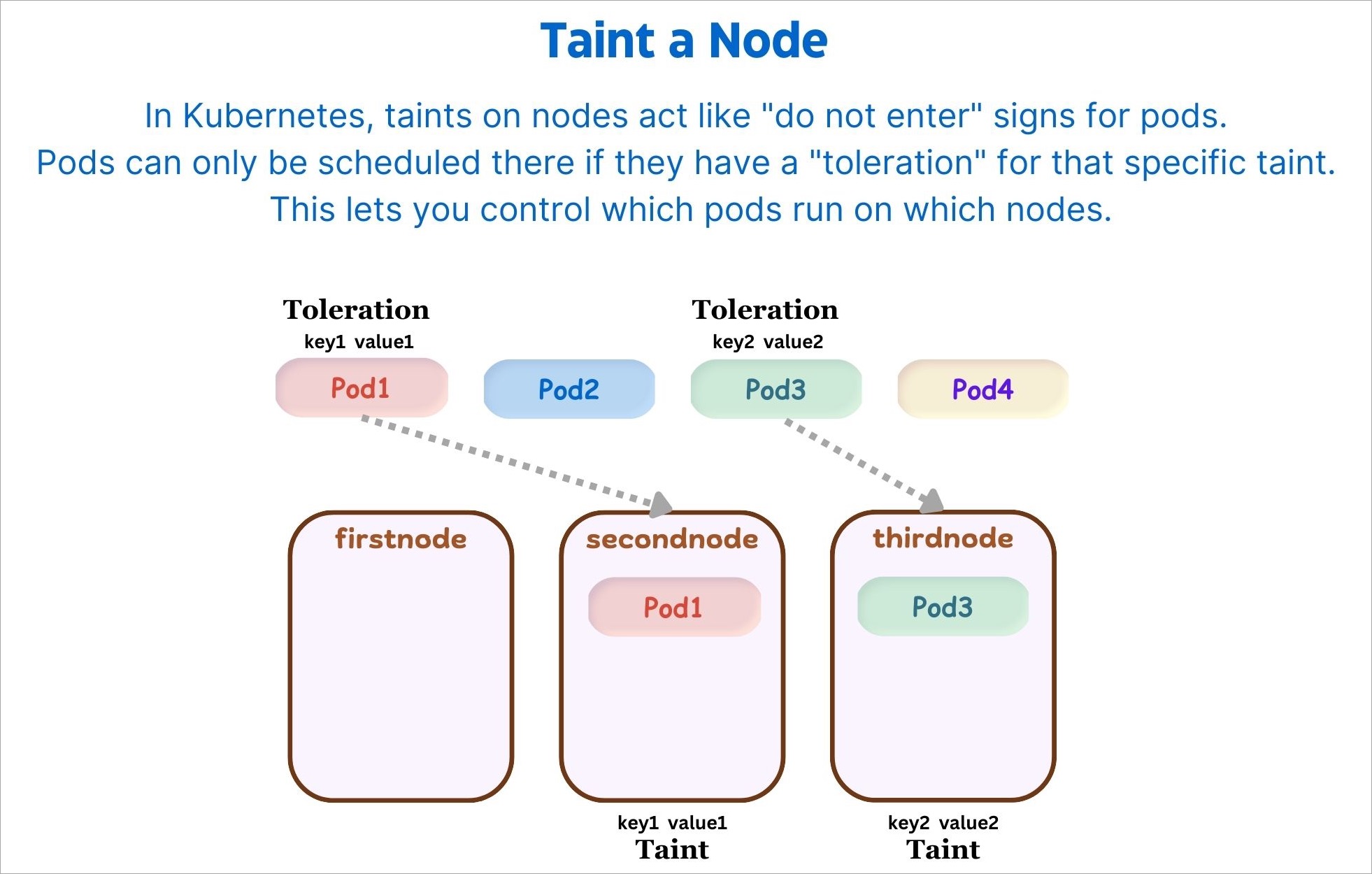
Note: Make sure to check taint validations before you add a taint.
-
Click Edit taints.
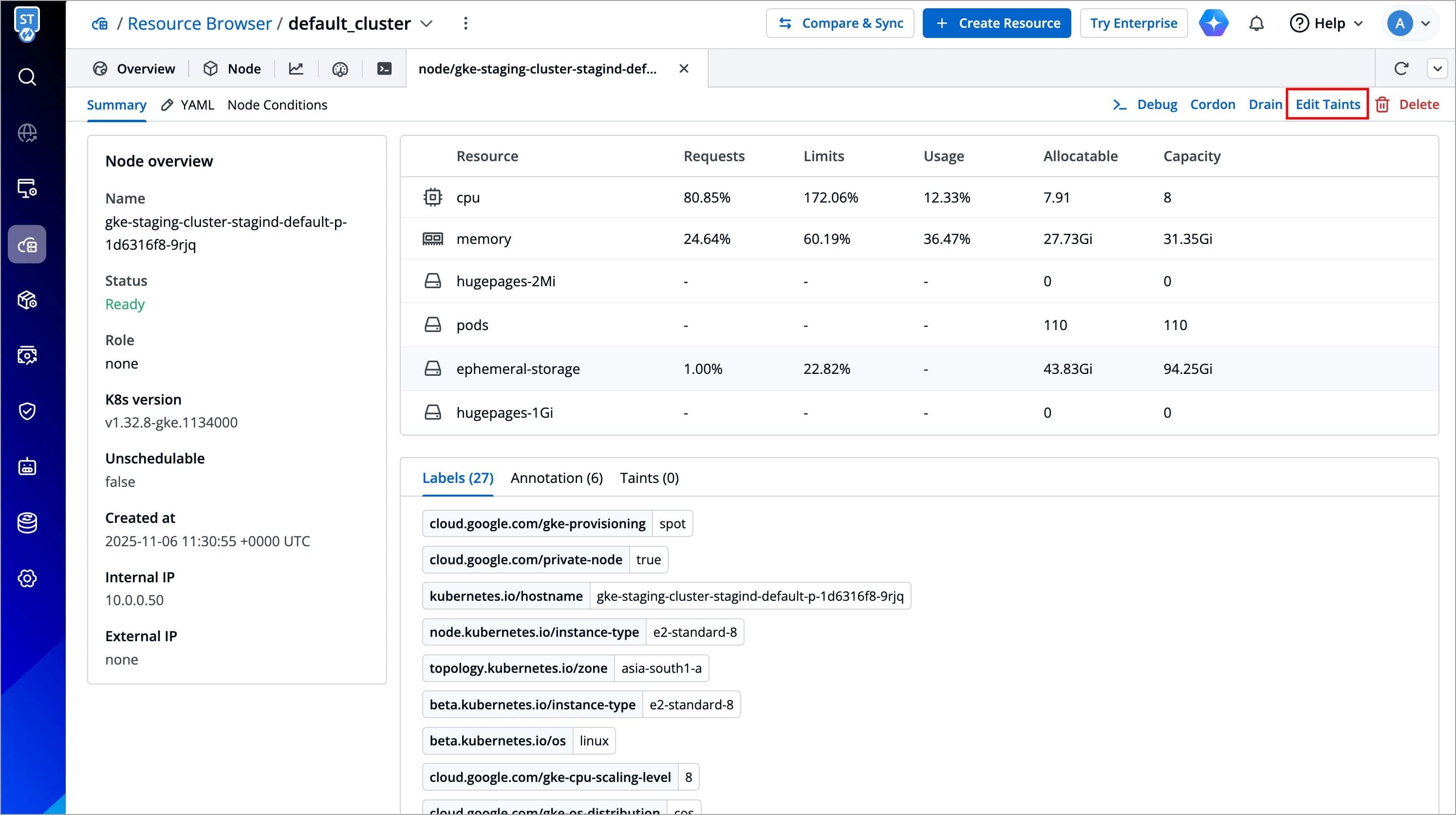
Figure 6b: Tainting a Node -
Enter the
key:valuepairs and select the taint effect from the drop-down list. Click here to read about taint effects.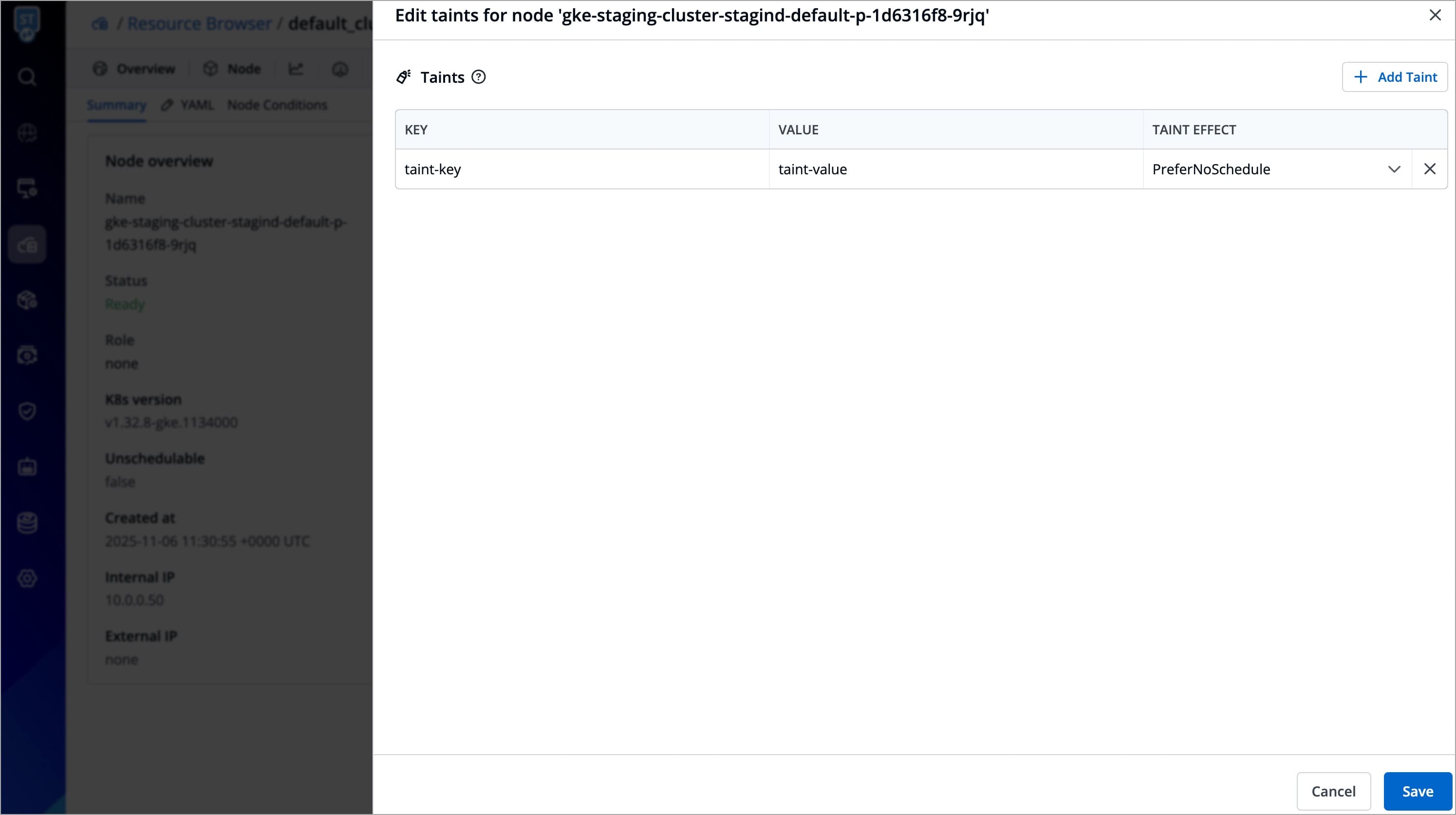
Figure 6c: Adding Taints -
Click Save.
You can also add more taints using + Add taint button, or delete the existing taint by using the delete icon.
Edit a Node Config
This allows you to directly edit any node. It will open the editor which contains all the configuration settings in which the default format is YAML. You can edit multiple objects, although changes are applied one at a time.
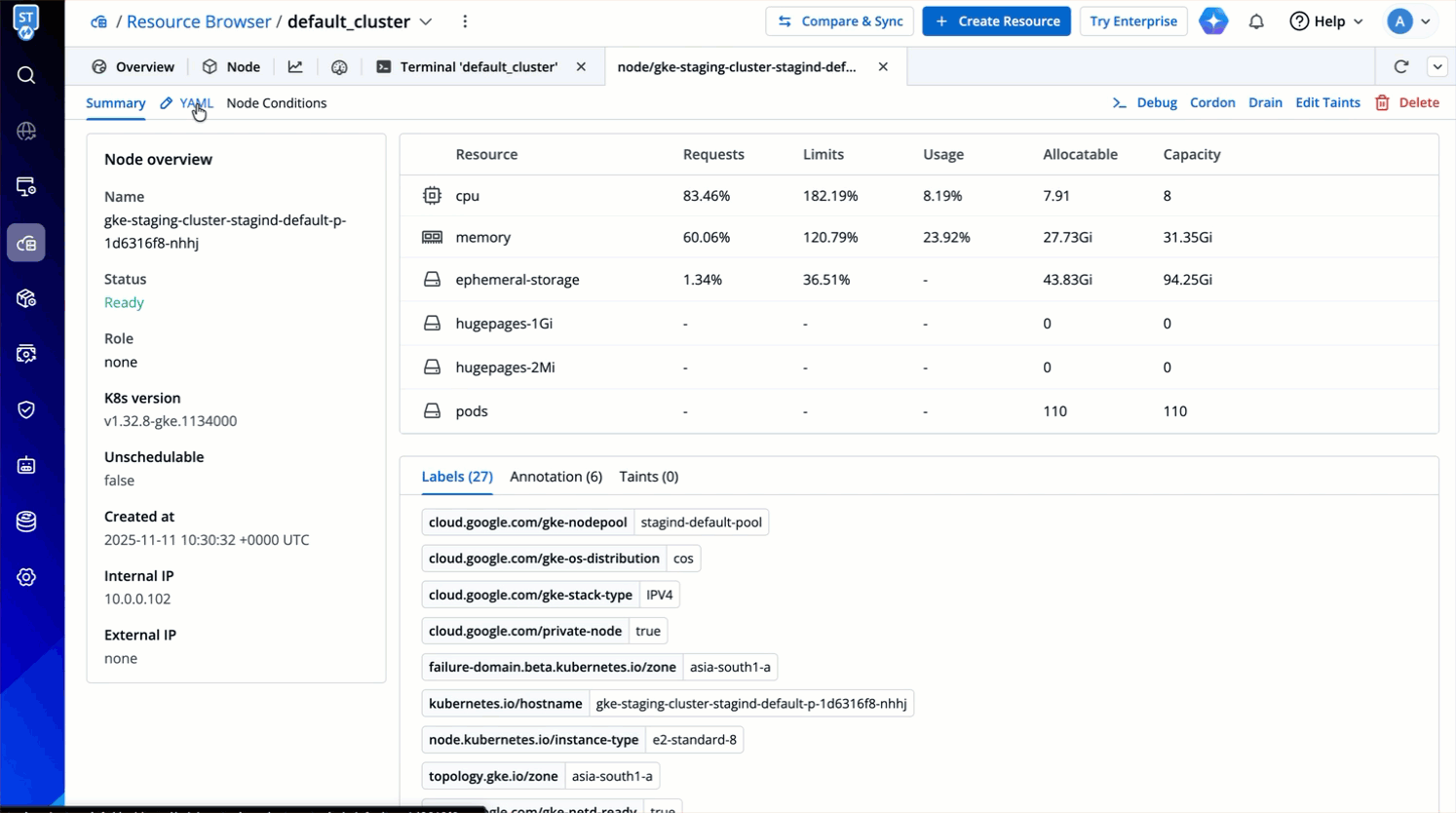
- Go to the
YAMLtab and click Edit YAML. - Make the changes using the editor.
- Click Review & Save changes to compare the changes in the YAML file.
- Click Apply changes to confirm.
Delete a Node
You can also delete a node by clicking the Delete button present on the right-hand side.

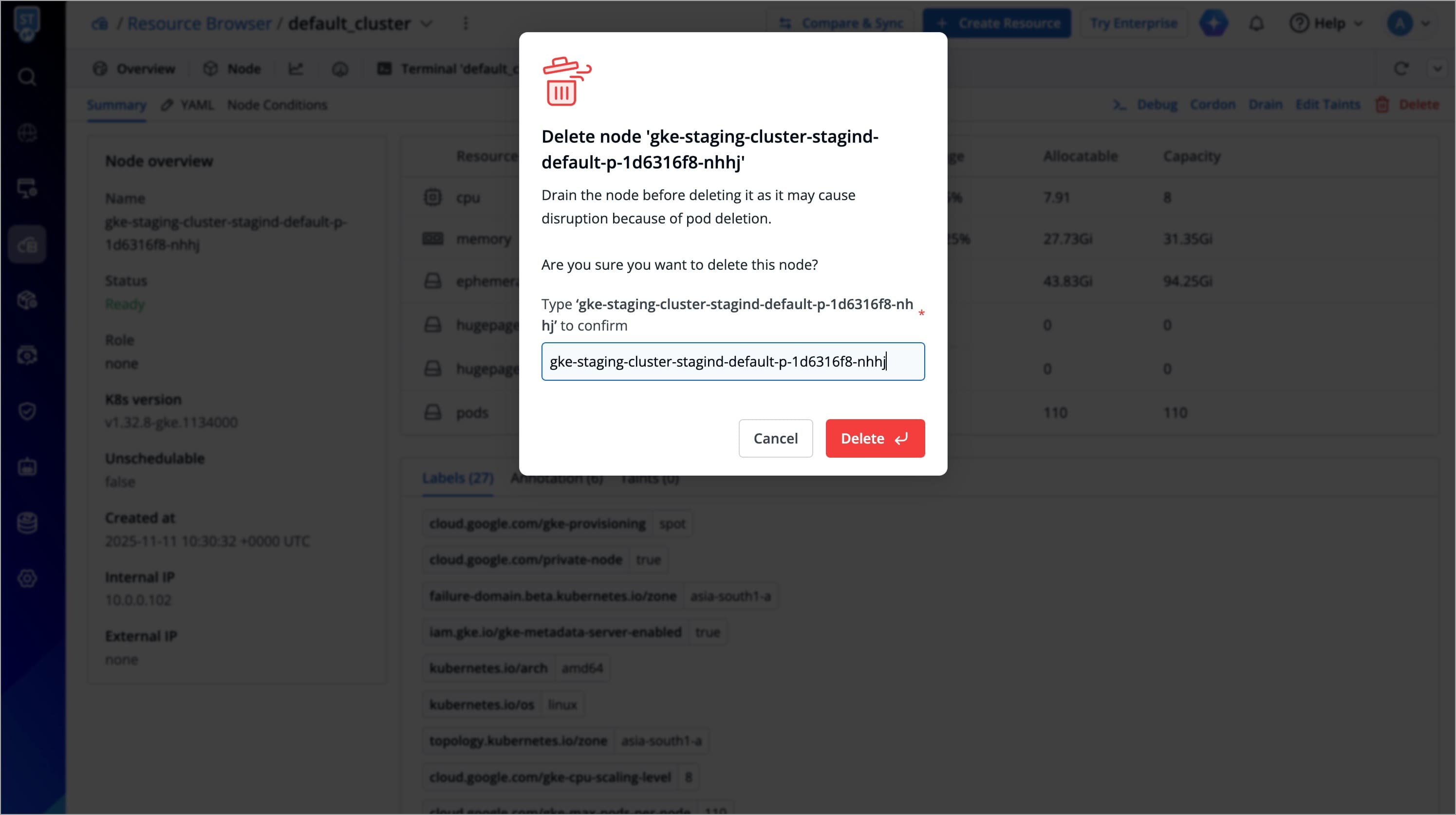
The node will be deleted from the cluster.
You can also access Cluster Terminal from your node.